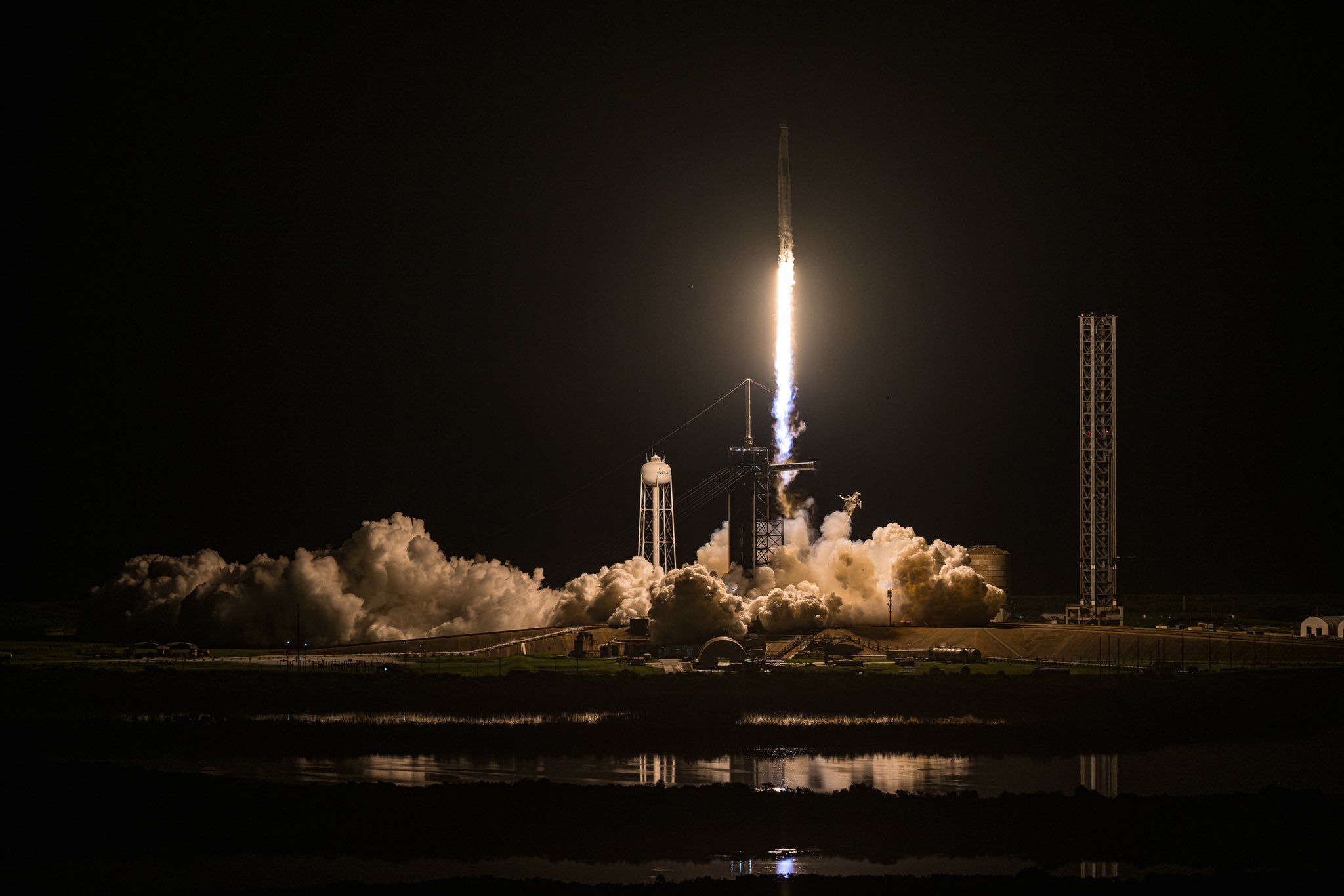
Polaris Dawn has officially launched, marking a historic step in civilian space exploration.
On the morning of September 10, a SpaceX Falcon 9 rocket lifted off from NASA’s Kennedy Space Center in Florida, carrying four private astronauts in a mission that aims to achieve several firsts, including the first commercial spacewalk. After delays due to both technical issues and inclement weather, the mission successfully commenced at 5:23 a.m. EST.
The Polaris Dawn crew, led by billionaire entrepreneur Jared Isaacman, includes mission pilot Scott “Kidd” Poteet, a retired U.S. Air Force Lieutenant Colonel, and two SpaceX engineers: Sarah Gillis, an astronaut trainer, and Anna Menon, SpaceX’s medical director. This five-day mission is the first of three under Isaacman’s Polaris Program, which seeks to push the boundaries of human spaceflight in partnership with SpaceX.

Crew Prepares for Record-Breaking Spacewalk
One of the mission’s primary objectives is to conduct the first-ever spacewalk involving non-government astronauts. On day three, the crew will lower their altitude to around 700 kilometers (435 miles) and prepare for the spacewalk. All four astronauts will wear SpaceX’s new Extravehicular Activity (EVA) suits, although only Isaacman and Gillis will exit the Dragon capsule. They’ll remain tethered to the spacecraft by umbilical cords while performing a 15- to 20-minute spacewalk, relying on handholds attached to the Dragon’s exterior to navigate. This operation will require venting and depressurizing the Dragon, which is expected to take about two hours in total.
Before the spacewalk, the crew will reach an unprecedented altitude of 1,400 kilometers (870 miles), three times higher than the International Space Station and the highest point a human crew has reached since NASA’s Apollo 17 mission in 1972. As the Dragon capsule travels briefly through the Van Allen radiation belt, the crew will conduct research on radiation effects in space. The research includes:
- Studying how high-energy radiation in the Van Allen belt impacts the human body.
- Collecting data on radiation exposure that may be used in planning future long-term missions, such as trips to Mars.
- Enhancing understanding of human health science in deep-space environments.
Mission Seeks to Study Radiation Effects in Deep Space
Isaacman emphasized the importance of this research in a previous press conference, explaining how understanding radiation exposure is crucial for future deep-space missions. “If we get to Mars someday, we’d love to be able to come back and be healthy enough to tell people about it,” Isaacman said. This research may play a critical role in ensuring the safety and well-being of astronauts in future missions to Mars and beyond.
The mission also provides an opportunity for SpaceX to test various technologies in orbit. Besides testing the new EVA suits, the crew will evaluate communication systems between the Dragon capsule and SpaceX’s Starlink satellite network, potentially enabling in-capsule Wi-Fi for future missions. These communications could be a vital tool for long-duration spaceflights, especially for missions to the moon or Mars, where reliable crew communication is critical.
Polaris Dawn Lays Groundwork for More Missions
Polaris Dawn is the beginning of Isaacman’s ambitious Polaris Program, with plans for two additional missions. The second mission has not yet been detailed, but the third is slated to be the first crewed launch of SpaceX’s Starship, a spacecraft designed for deep-space exploration. Isaacman himself is no stranger to space, having previously led the Inspiration4 mission in 2021, which was the first all-civilian spaceflight.
Following five days in space, the Polaris Dawn crew will return to Earth and splash down off the coast of Florida. While the exact cost of this mission has not been disclosed, it represents a significant partnership between Isaacman and SpaceX, with both entities pushing the boundaries of private space travel.
As the Polaris Dawn mission unfolds, it promises to offer new insights into human spaceflight, test cutting-edge technology, and pave the way for future deep-space exploration. With plans to explore the moon and Mars on the horizon, the mission stands as a testament to the growing role of private industry in advancing space travel.
Featured Image courtesy of Polaris Program
Follow us for more tech news updates.
